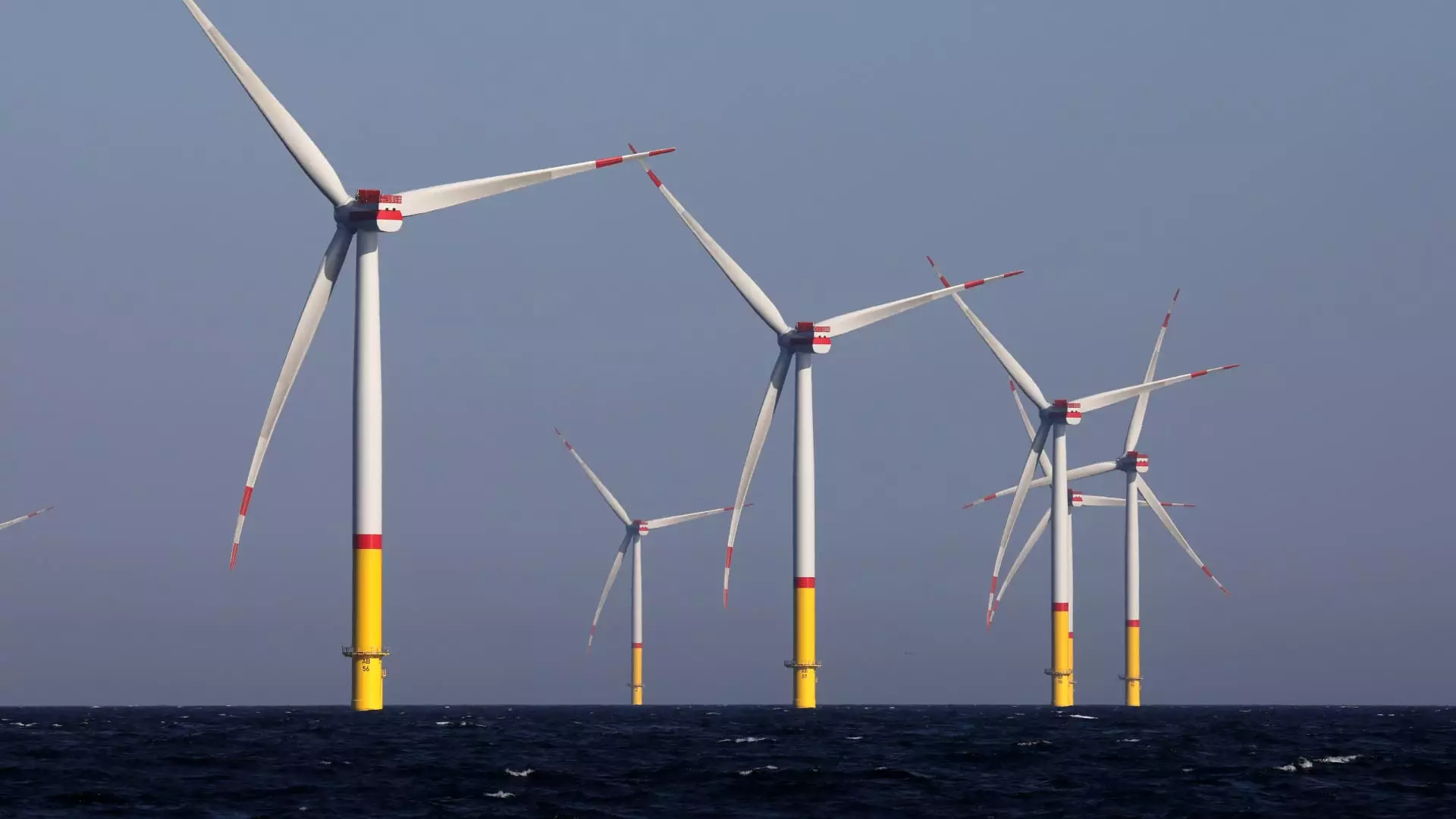In a twist of political irony and operational tenacity, Norwegian energy giant Equinor is making strides to advance its offshore wind farm, Empire Wind 1, located off the coast of New York. This project has emerged not merely as an energy initiative but as a symbol of the political climate’s impact on vital renewable energy endeavors. With construction back on track after the lifting of a controversial stop-work order—initially imposed by the previous Trump administration—Empire Wind is poised to become an essential player in New York City’s clean energy landscape. It is not just about energy; it’s a reflection of how political machinations can either propel or inhibit progress in renewable energy.
The Empire Wind 1 project is significant for several reasons. Beyond its potential to deliver renewable electricity directly to one of the most populated urban areas in the U.S., it embodies the economic viability of offshore wind energy. The construction is set to create 1,500 union jobs, which offers a compelling narrative about how clean energy initiatives can also bolster local economies while adhering to labor standards. Governor Kathy Hochul’s confirmation of the resumption of work brings optimism not only for Equinor but also for a broader coalition advocating for renewable energy in the state.
Political Clouds: Disrupting Renewable Progress
However, the trajectory of Empire Wind has been marred by political interference. Interior Secretary Doug Burgum’s decision to halt construction raised red flags about the security of renewable projects under the current administration. This stop-work order wasn’t merely a procedural issue; it ignited fears that other sanctioned wind projects could fall victim to similar political whims. This situation underscores a critical question: Can we trust political leadership to prioritize sustainable energy, or will power struggles and ideological battles sabotage our transition to a greener economy?
Burgum articulated concerns regarding insufficient analysis regarding the project’s potential impacts, suggesting a cautious approach to environmental governance. Yet, the timing of his intervention seemed politically motivated—especially as it came shortly after President Trump’s history of vilifying wind energy projects. Trump’s constant barrage against wind turbines painted them as economically unviable and harmful to wildlife. Such rhetoric, while resonating with a defined political base, casts a long shadow over the credibility of the U.S. commitment to renewable energy.
New York State’s history of opposing natural gas pipelines complicates this narrative further. While the Hochul administration aims to collaborate on energy projects, it is consistently walking a tightrope between environmentalism and economic pragmatism. The fact that natural gas was conspicuously absent from Hochul’s statements during the project’s resumption highlights a reluctance to engage with fossil fuels, even on a temporary basis.
The Renewable Energy Dilemma: Employers vs. Eco-Activism
Compelling as these arguments may appear, they underline an essential tension in the U.S. energy sector: the dichotomy between supporting renewable jobs and managing the ecological impact of fossil fuels. It’s a classic case of “out of sight, out of mind,” where the invisible consequences of energy extraction often take a backseat to immediate economic needs. When will politicians recognize that sustainable economics do not have to come at the environmental cost?
Equinor’s commitment to investing $2.5 billion into Empire Wind paints a hopeful picture. It reflects a resolve that is often lacking in governmental policy—long-term investment in clean energy and the jobs associated with it, irrespective of political tides. Wind power, with its capacity to generate approximately 810 megawatts of electricity, is capable of powering half a million homes in a world increasingly desperate for cleaner energy solutions. This project, however, brings to light a pressing issue: The absence of a coherent, bipartisan strategy for pushing renewable energy forward.
As we contemplate the future of Empire Wind 1 and other renewable projects across the U.S., the problem persists: political forces can either usher in a clean energy renaissance or draw back the curtains to reveal stagnation and uncertainty. Burgum’s eagerness to align with Hochul to lift the stop-work order may create a temporary sense of relief, but it also leaves an unsettling question in its wake: Which voice will eventually reign in the ongoing dialogue between progress and regulation?
The projects under construction along the Eastern Seaboard, such as Revolution and Sunrise Wind, further emphasize the need for cohesive support for renewable energies. The construction of these projects represents essential progress, yet they also underscore the critical need for consistent governmental backing, devoid of politically charged interruptions.

